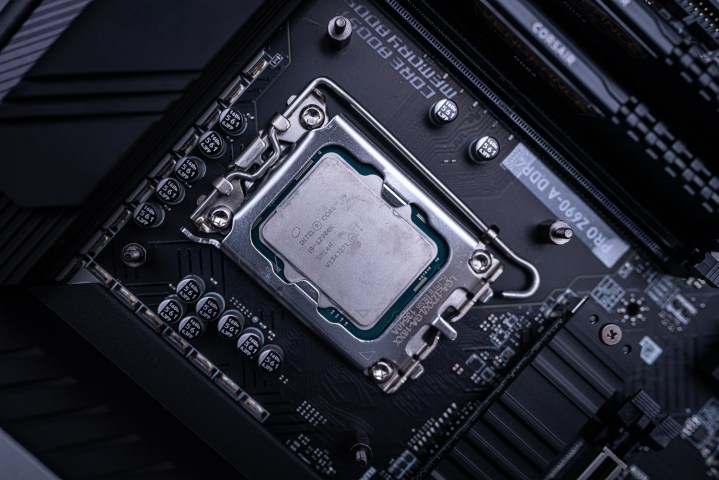AMD has been beaten to the punch as Intel has officially announced the release date of the upcoming Core i9-12900KS, a desktop CPU to rival the best processors on the current market.
Set to arrive on April 5, the new CPU will hit the shelves over two weeks before the upcoming AMD Ryzen 7 5800X3D.

Both Intel and AMD have spoken about their upcoming processors many times, with each claiming marked upgrades in gaming scenarios. AMD dubbed the Ryzen 7 5800X3D the “world’s most advanced desktop gaming processor,” indirectly comparing it to Intel’s Core i9-12900K. With these two new CPUs releasing so close together, the competition is likely to be tight. Although AMD was the first to announce a firm release date, Intel’s CPU will be the first to arrive.
The upcoming Intel Core i9-12900KS launches as a direct successor to the Core i9-12900K, offering upgraded specs and a whole lot of power. It comes with 16 cores (8 performance, 8 efficient) and 24 threads, as well as clock speeds up to 5.5GHz in turbo mode and 30MB of L3 cache. The CPU also features a processor base power of 150 watts.
In terms of cores, the new Core i9-12900KS has the same configuration as its predecessor, the Core i9-12900K. However, when it comes to clock speeds, it has the previous king of the hill beaten by a noticeable margin, adding 300MHz in turbo mode. However, owning one of the best CPUs available is not cheap, so it should come as no surprise that the Core i9-12900KS comes with a hefty price tag.

The i9-12900KS will be priced at $740 from the get-go. Compared to the Core i9-12900K, people will be paying a large premium in order to buy the latest model: The older CPU is currently on sale for around $610 on Amazon, down from $707. Although it’s true that Intel’s new offering will undoubtedly beat the Core i9-12900K, many people may not want to spend $740 on gains that may not prove to be that significant in gaming.
Then there’s the AMD Ryzen 7 5800X3D. The chip, featuring AMD’s innovative 3D V-Cache architecture, is going to be the first — and only — of its kind. In a recent benchmark, it was able to deliver a 9% performance increase over the base Ryzen 7 5800X. At first glance, the Core i9-12900KS looks like it will have the new AMD offering beat, as this CPU comes with eight cores, 16 threads, and a boost clock of up to 4.5GHz that cannot be overclocked. On the other hand, the massive 96MB of stacked L3 cache is huge, so there will certainly be a degree of rivalry between these two CPUs.
As far as prices are concerned, AMD beats Intel by leaps and bounds. The new Ryzen 7 5800X3D has a much more reasonable MSRP of $450. However, Intel is launching first, and that alone might spell bad news for AMD and push undecided customers in Intel’s direction. There’s also the possibility that the Core i9-12900KS will prove superior to AMD.
Once the first benchmarks of the Core i9-12900KS begin to leak out, we will be able to accurately gauge its performance, and soon enough, compare it to the AMD Ryzen 7 5800X3D. One thing is for sure — exciting times are ahead for desktop gamers.
Editors' Recommendations
- 4 CPUs you should buy instead of the Intel Core i9-13900K
- The only Intel CPU you should buy is over a year old
- Intel just launched the ‘world’s fastest’ CPU
- Intel may have a monster new CPU coming soon
- AMD is valiantly keeping its word to gamers



